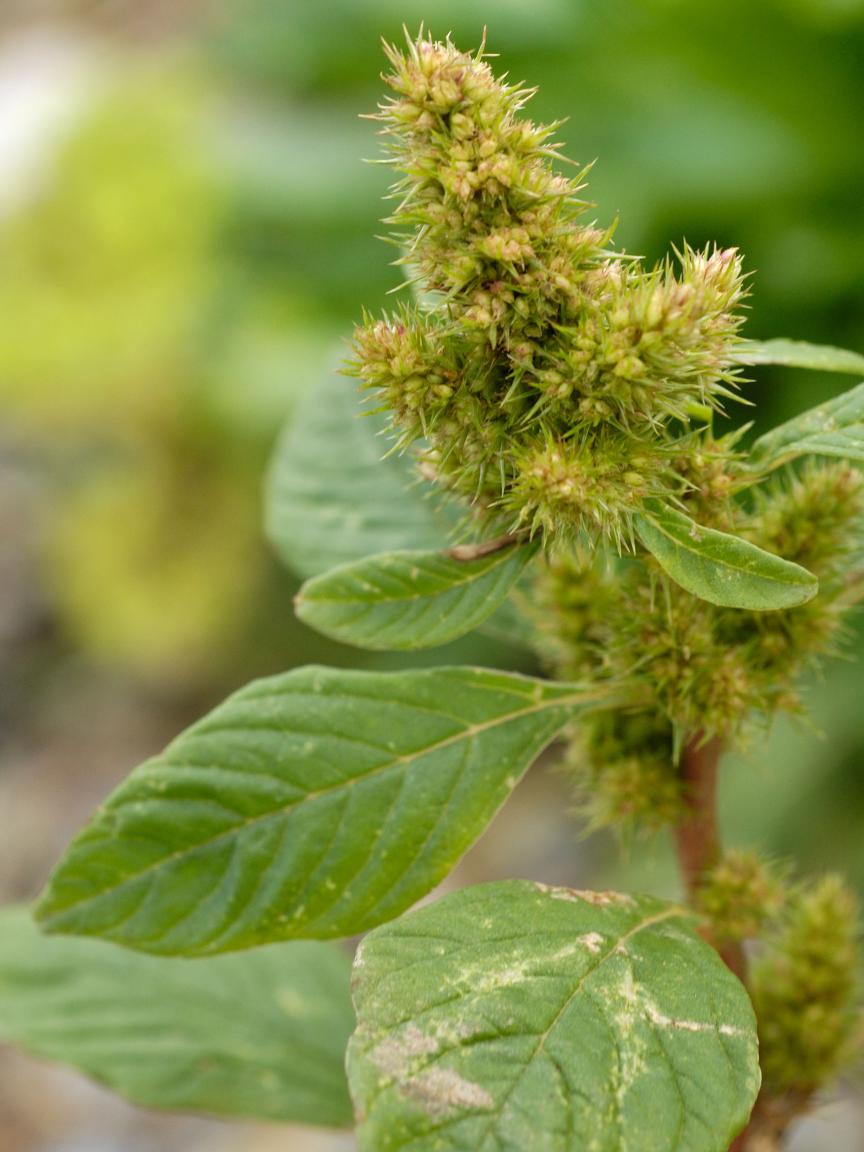Connect with Range & Pasture:
New research shows pigweed hammers pasture productivity

The research team used DuraCor® herbicide to create clean, 6-foot-wide strips in pastures with medium weed pressure (right).
The research team used DuraCor® herbicide to create clean, 6-foot-wide strips in pastures with medium weed pressure (right).
In 2019, Dr. Jose Dubeux, professor of forage agronomy at the University of Florida (UF), did something he’d never thought he’d do in his extensive career — harvest spiny pigweed (amaranth) seeds. His motive? Assess how spiny pigweed encroachment would affect cattle performance on bermudagrass pastures.
Dubeux has been working in partnership with Corteva Agriscience to research how weed infestations in pastures affect cattle performance and grazing patterns. In 2020, Dubeux and his team at the UF research center divided the center’s land into 12 3.3-acre pastures that would have varying levels of pigweed: four pastures with no weed pressure, four pastures with medium weed pressure and four pastures with high weed pressure. To set the scene, the team sowed pigweed seeds into the pastures with medium and high weed pressure. Then they applied DuraCor® herbicide to the entirety of the clean pastures and strips in the pastures with medium weed pressure.

“DuraCor worked really well controlling the pigweed,” Dubeux says. “So, we were able to create that gradient of pigweed infestations.”
Now that the pastures were established, it was time to turn out the cattle.
“In 2021, we started the grazing trial where we adjusted the stocking rate based on the amount of forage available in each paddock,” Dubeux says.
The team also measured average daily gain and gain per area on each pasture. GPS collars were used to see how the grazing behavior was impacted and how much time they spent in the clean versus highly infected areas. The study began in June 2021 and ran throughout the summer. After 84 days of monitoring and assessing their trials, their work was halted; the unanticipated presence of coffeeweed and other weeds in the pastures skewed their research. In 2022, Dubeux resumed the study to provide holistic data on the how spiny pigweed affects herd health and performance.
The research completed in 2021 did make one thing clear: Spiny pigweed affected stocking rates. Significantly. Dubeux’s team found a 15% to 20% decrease in stocking rates for highly infested pastures.
“It’s still early, but the stocking rate is significant, and that’s a huge loss for the livestock industry,” Dubeux says.
Dubeux also noticed greater land depreciation in highly infested pastures. Weeds compete with desirable forages for resources, such as moisture, nitrogen and sunlight. In one summer, the research team noticed third and fourth generations of pigweed plants, which in a normal pasture would be a significant threat to forage productivity.
“It’s really important to reduce infestations. For every pound of weeds we’re growing, we are losing at least a pound of forage,” Dubeux says.
If you’re not controlling weeds, you’re losing money, Dubeux says. And if you’re going to control weeds, control them efficiently with a timely herbicide treatment.
“The seedbank [of spiny pigweed] is huge,” Dubeux says. “If we mowed them, they would have kept growing back and spread more seeds.”
For in-the-moment updates on this project, follow @dubeux on Twitter or @UFIFASAgronomy. Keep reading Range & Pasture Steward for future coverage on Dubeux’s 2022 continuing research.
® Trademark of Corteva Agriscience and its affiliated companies. Under normal field conditions, DuraCor® is nonvolatile. DuraCor has no grazing or haying restrictions for any class of livestock, including lactating dairy cows, horses (including lactating mares) and meat animals prior to slaughter. Label precautions apply to forage treated with DuraCor and to manure and urine from animals that have consumed treated forage. DuraCor is not registered for sale or use in all states. Contact your state pesticide regulatory agency to determine if a product is registered for sale or use in your state. Consult the label for full details. Always read and follow label directions.